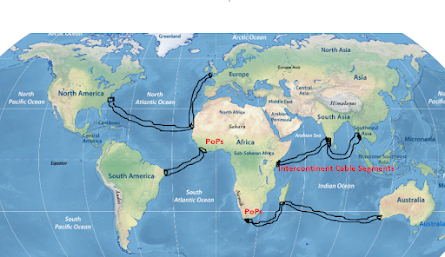Precision Agriculture, Internet of things(IoT) and the Opportunity for Yield Multiplication in Africa
Digital transformation and technology are touching every facet of life today from banking, education, health, governance etc. Billionaires have been created overnight by harnessing the power of technology to mediate between markets and people, and solving previously 'impossible' societal challenges. It is technology that has broken geographical boundaries and made the world a global village.
In Africa, where most economies largely depend on Agriculture for livelihood, with farmers using traditional methods of Agricultural production, there is a huge opportunity for technology to fill this gap to improve yields (and their variety), double or triple farmer returns and encourage more young men and women to pursue careers in the sector. With increased connectivity, we can use Internet of things(IoT) technology to determine Soil status in terms of type, nutrient distribution, salinity, PH, soil Moisture, related parameters like Temperature and Humidity as well as improving Pest Control methods.
We know that every crop in the growth cycle will require certain percentages of Nitrogen, Phosphorous, Potassium and Soil moisture or Water. And the soil PH will determine which crops prosper in acidic soils, in Alkaline type soil etc.
Therefore, by measuring nutrient quantities of these and other associated parameters we can help farmers to know when, where and what to plant, know what quantities, if any of fertilizer to apply, predict with certainty what the yield is going to be and hence know the expected incomes.
With nearly predictable income access to finance and insurance products becomes possible for the farmers. More importantly, by measuring soil moisture and knowing the thresholds we can smartly trigger simple, affordable irrigation methods to ensure forecast and actual produce is nearly equal.
This is what using technology, in what is termed as Precision agriculture with IoT offers the Agricultural ecosystem.
For starters, a simple architecture of an end to end IoT system for Agriculture that can help us collect the above data for upstream interpretation and downstream distribution to farmers is shown below;
But to demonstrate the Potential of Agriculture on the continent, and why we must immediately adopt the above smart farming methods, the African Development bank(AFDB) president, Dr.Akinwumi Adesina, in an April 2019 workshop for the African youth in Abidjan said thus;
1) "What Africa does with agriculture will determine the future of food in the world. Who drinks oil, who smokes gas? But you all had breakfast this morning."2) 65% of the world’s uncultivated arable land is in Africa and the sector could generate a market of $1 trillion by 2030. “You want to be a billionaire? You want to be a millionaire? Get into agriculture".
So what do we do as a continent to harness this great potential?
What the $1 trillion projection tells us is that we need to organize ourselves and execute programs at both micro and macro levels.
At a Micro level;
We can organize farmers into groups, crop expertise and deploy appropriate IoT sensor technology to collect and analyze farm field soil data. We can then arm them with soil information profiles via web, sms, ussd, App and other channels to help them with decision making, so they no longer have to depend on the traditional methods of waiting for seasons to Plant, as is the case today in most of Africa. It also saves them money since the inputs like fertilizers procured would only be done so based on science and not assumptions.
At a Macro level;
a)We can use the soil data collected across the country to create soil nutrient maps that can be used in annual and long-term strategic country planning, commonly called National development plans in some jurisdictions.
b) Country Territories can be zoned out to create agricultural belts based on soil and crop types and flexible reconfiguration. With predictable, voluminous yields and variety, the country's annual revenues and GDP can be tremendously improved.
c) With predictable, fairly consistent yields, new bankable business models can unlock new investment opportunities, via public-private partnerships or similar investment vehicles, into factories and industries for processing and value addition, Warehouses/ Silos for Storage, a distribution/logistics network to support the entire agricultural system value chain, hence creating employment for the Young people.
d) Create and stimulate local, regional and international/export trading blocs to consume the agricultural products value chain.



Comments
Post a Comment